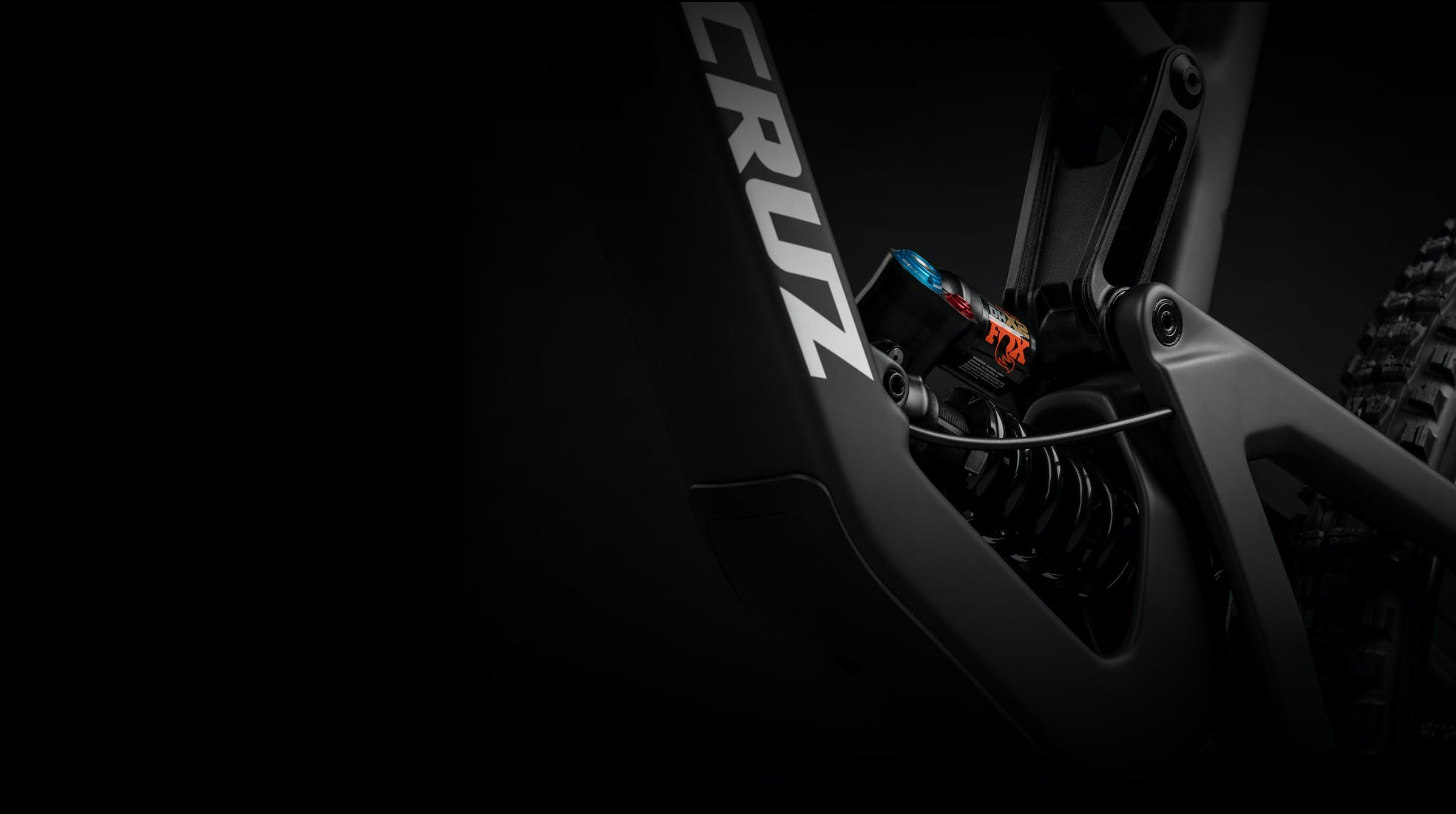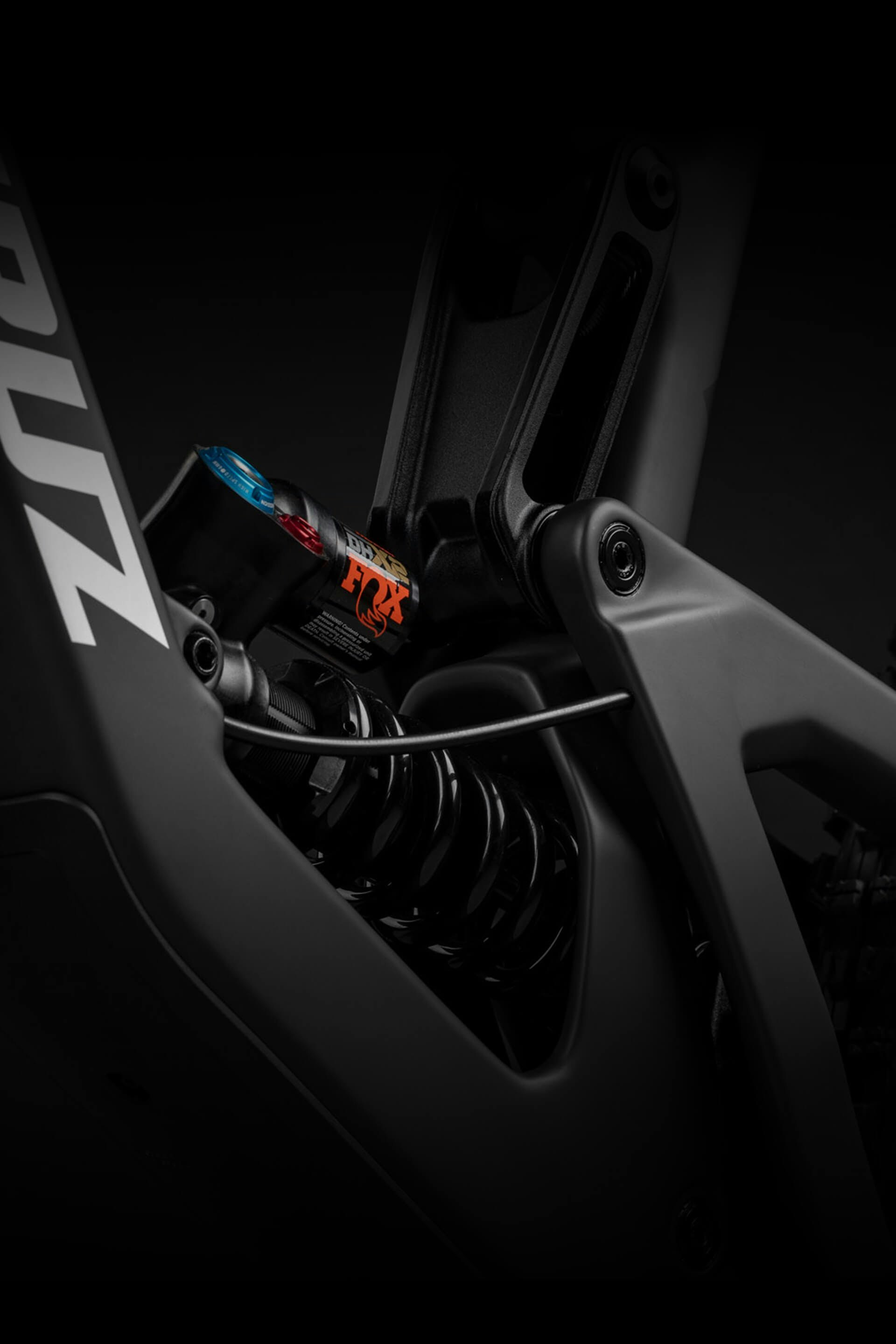VPP™ Suspension Design
Since 2001, we've been using a Virtual Pivot Point, or VPP™, suspension design to bring you the best balance of pedaling efficiency and all-out bump-chomping prowess available, all while being extremely tough and reliable. That's all fine and dandy, but how does it work?
In a nutshell, VPP™ utilizes two links that rotate in opposite directions, creating a "virtual" pivot point, or instant center, that moves throughout the suspension travel, dictating the rear wheel's axle path. This virtual pivot makes this design highly tuneable, allowing us to deliver the exact riding characteristics we want, depending on the application—ensuring you're left with the best riding experience, no matter what Santa Cruz bicycle you're riding.
VPP™ Suspension Design
Since 2001, we've been using a Virtual Pivot Point, or VPP™, suspension design to bring you the best balance of pedaling efficiency and all-out bump-chomping prowess available, all while being extremely tough and reliable. That's all fine and dandy, but how does it work?
In a nutshell, VPP™ utilizes two links that rotate in opposite directions, creating a "virtual" pivot point, or instant center, that moves throughout the suspension travel, dictating the rear wheel's axle path. This virtual pivot makes this design highly tuneable, allowing us to deliver the exact riding characteristics we want, depending on the application—ensuring you're left with the best riding experience, no matter what Santa Cruz bicycle you're riding.
VPP™ Suspension Design
Since 2001, we've been using a Virtual Pivot Point, or VPP™, suspension design to bring you the best balance of pedaling efficiency and all-out bump-chomping prowess available, all while being extremely tough and reliable. That's all fine and dandy, but how does it work?
In a nutshell, VPP™ utilizes two links that rotate in opposite directions, creating a "virtual" pivot point, or instant center, that moves throughout the suspension travel, dictating the rear wheel's axle path. This virtual pivot makes this design highly tuneable, allowing us to deliver the exact riding characteristics we want, depending on the application—ensuring you're left with the best riding experience, no matter what Santa Cruz bicycle you're riding.
Squish Good, Pedal Good
To find suspension nirvana, we look at three major factors that affect how suspension works and feels: Anti-squat, anti-rise, and shock leverage rate. With VPP™, we aren’t constrained by a static instant center like many other designs, so our engineers combine thousands of design simulations with hundreds of hours of ride testing to find the perfect balance of anti-squat, anti-rise, and shock leverage rate. But what on earth are this anti-squat and anti-rise balance we speak of? First, let’s dive into how these two parameters affect suspension performance.
Anti-squat
Anti-squat affects how much of your weight on the pedals–whether pedaling or descending–influences your suspension’s movement. Too high, and your bike will feel too harsh when you’re compressing quickly into the travel while descending, but too low will create inefficient pedal bob. And to further complicate this, it changes throughout the suspension’s travel. We take the best of both worlds and tune our suspension with a higher anti-squat at the sag point, then gradually lower it as you get deeper into the travel. That way, you get a solid, efficient pedaling platform for tough climbs and mid-descent sprints combined with active, bump-chomping suppleness when you need it most.
Anti-rise
On the other hand, anti-rise affects how your suspension performs while braking. When you grab a handful of brake, the force of your mass slowing down causes weight to move onto the front wheel, causing the bike’s rear end to rise. Anti-rise counteracts this force to help keep your bike’s geometry planted, giving you more confidence when you’re white-knuckling down a steep chute. But make it too high, and your bike will squat too much under hard braking, making it track unpredictably. We’ve struck the perfect balance of anti-rise on each of our models to ensure you have predictable tracking yet active braking—so go ahead and send it down that steep chute that’s been haunting you.
Leverage Rate
The final piece of the puzzle, shock leverage rate, is the relationship between the movement of your axle and your shock at any given point in the travel—often in varying degrees and shapes of progressivity. Progressive rates require increasing amounts of additional force to move the rear wheel as the suspension gets further into its travel, meaning that it feels relatively soft in the initial part of the travel, then stiffer later. In contrast, a minimally progressive, or more linear, rate will have less natural ramp-up, which pairs well with air shocks–which are inherently progressive—giving a good balance of plush small-bump and bottom-out resistance. You’ll find varying leverage rates on our bikes depending on travel and intended use case, again ensuring you have the best-performing suspension for how you like to ride.
Why VPP™
The perfect suspension curves on paper are useless if you constantly have to work on your suspension, which is where VPP™ comes into play. Our short, stout, counter-rotating links connect the unified front and rear triangles to create an extremely robust chassis, adding durability and stiffness. Simple linkages contain the pivot points to prevent slop from developing over time, grease ports make it super-serviceable, and pivots run on large-diameter axles and bearings, which we offer free lifetime replacement for—so if/when your bearings do wear out, simply pop some new ones in your link and your bike’s almost new again. So run it hard and rest easy knowing that your Santa Cruz has been built to take some abuse.
Why VPP™
The perfect suspension curves on paper are useless if you constantly have to work on your suspension, which is where VPP™ comes into play. Our short, stout, counter-rotating links connect the unified front and rear triangles to create an extremely robust chassis, adding durability and stiffness. Simple linkages contain the pivot points to prevent slop from developing over time, grease ports make it super-serviceable, and pivots run on large-diameter axles and bearings, which we offer free lifetime replacement for—so if/when your bearings do wear out, simply pop some new ones in your link and your bike’s almost new again. So run it hard and rest easy knowing that your Santa Cruz has been built to take some abuse.
Why VPP™
The perfect suspension curves on paper are useless if you constantly have to work on your suspension, which is where VPP™ comes into play. Our short, stout, counter-rotating links connect the unified front and rear triangles to create an extremely robust chassis, adding durability and stiffness. Simple linkages contain the pivot points to prevent slop from developing over time, grease ports make it super-serviceable, and pivots run on large-diameter axles and bearings, which we offer free lifetime replacement for—so if/when your bearings do wear out, simply pop some new ones in your link and your bike’s almost new again. So run it hard and rest easy knowing that your Santa Cruz has been built to take some abuse.

